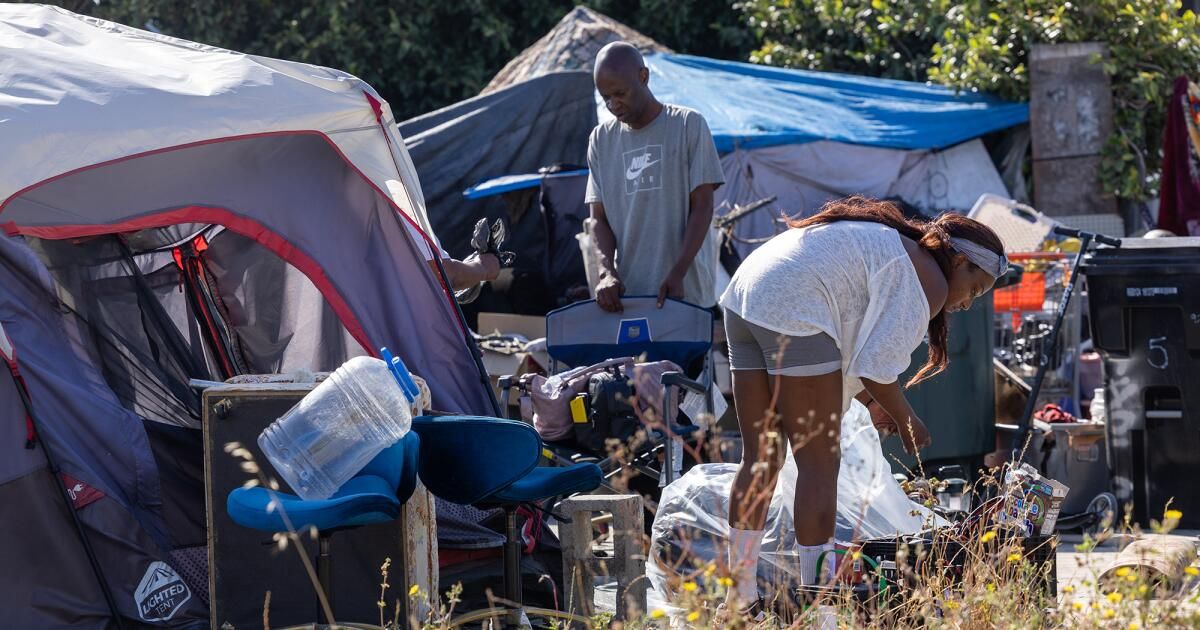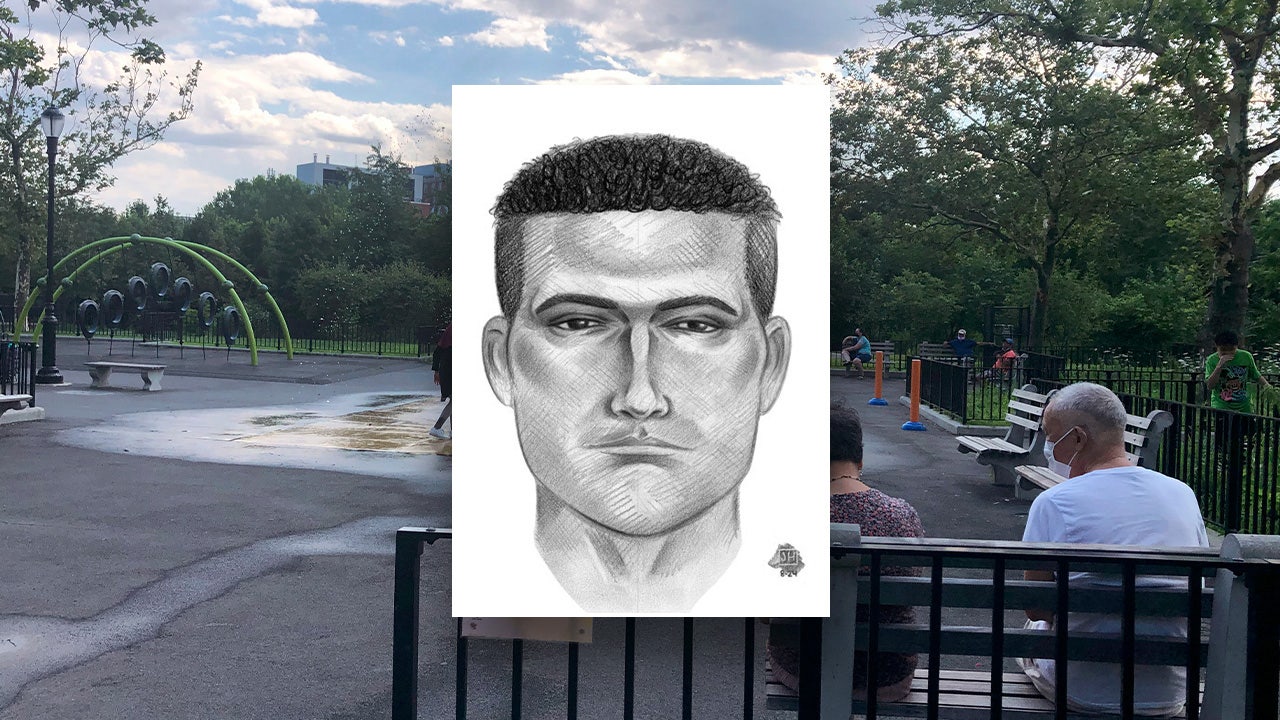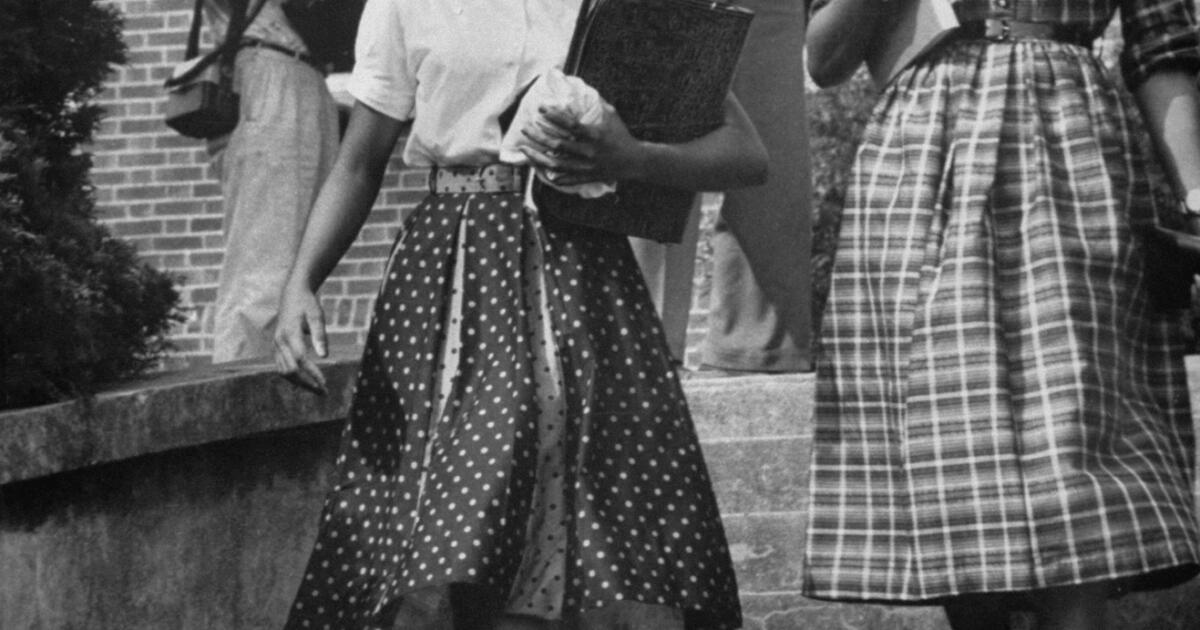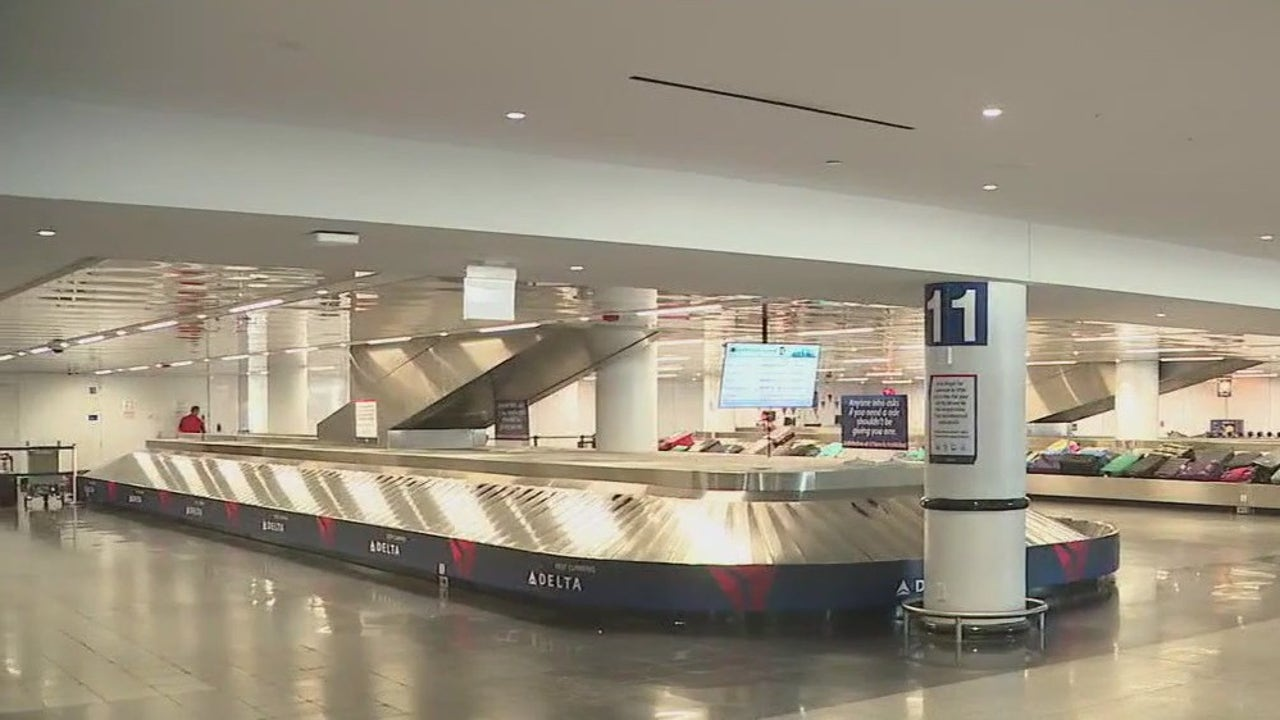After rising for the past five years, overall homelessness leveled off in Los Angeles this year, with fewer people living on the streets, according to the annual count released Friday.
The 2024 count, which represents a snapshot taken in January, appeared to show the effects of city and county programs to clear out encampments by moving people from tents, makeshift shelters and vehicles to hotels, motels and other forms of temporary housing.
“These changes in both the city and the county mean that this year, across our region, more people are experiencing homelessness indoors, where they are safer, where they have food, showers and better access to medical services and otherwise,” said Paul Rubenstein, deputy director of external relations for the Los Angeles Homeless Services Authority, which is conducting the count.
LAHSA estimated there were 75,312 homeless people countywide, including the city of Los Angeles, down 0.3% from the previous year. In the city, the figure was 45,252, a decrease of 2.2%, the agency said.
A homeless woman, right, waits as Inside Safe workers help people out of an encampment at 86th Street and Broadway on Wednesday.
(Brian van der Brug/Los Angeles Times)
Neither change was large enough to be considered statistically significant. But both broke steady upward trends that had seen the number of homeless people grow by more than 40% since 2018.
Reductions in the homeless and unsheltered population were more dramatic. The county’s homeless population was estimated at 55,365, a 5.1% decline. In the city, that number dropped 10.4%, to 29,275, according to LAHSA figures.
Mayor Karen Bass praised that progress, saying it shows city and county leaders have “changed the trajectory” of the region's homeless crisis.
“I know that many Angelenos have felt that this situation was hopeless,” he said. “Today we know that we can and will bring people inside and take Los Angeles in a different direction.”
Jennifer Hark Dietz, executive director of the nonprofit homeless services provider PATH, called the results an “absolute victory for Los Angeles.” The numbers show that when the city and county invest money in the right programs, they can achieve a decrease in the number of “people sleeping outdoors and a decrease in the number of homeless people overall.”
“It definitely doesn’t show us that we can slow down. We have to keep up the pace and hopefully even increase it. But I do think it gives us all a little bit of hope that we’re headed in the right direction,” he said.

Inside Safe workers clean up a homeless encampment in South Los Angeles on Wednesday.
(Brian van der Brug/Los Angeles Times)
LAHSA officials attributed the decline in the number and percentage of people living on the streets to Bass's Inside Safe initiative and close collaboration between city and county agencies.
The count came shortly after Inside Safe’s first year, which focused on some of the city’s largest and most problematic encampments. By mid-January, the initiative had reached 34 encampments in locations stretching from Harbor City, near the Port of Los Angeles, to Chatsworth in the San Fernando Valley.
At the time of the count, Inside Safe had moved 2,087 people into temporary housing. Even accounting for the 400 people who became homeless again and the 329 who received permanent housing, that represents more than half of the increase in the city's housing population.
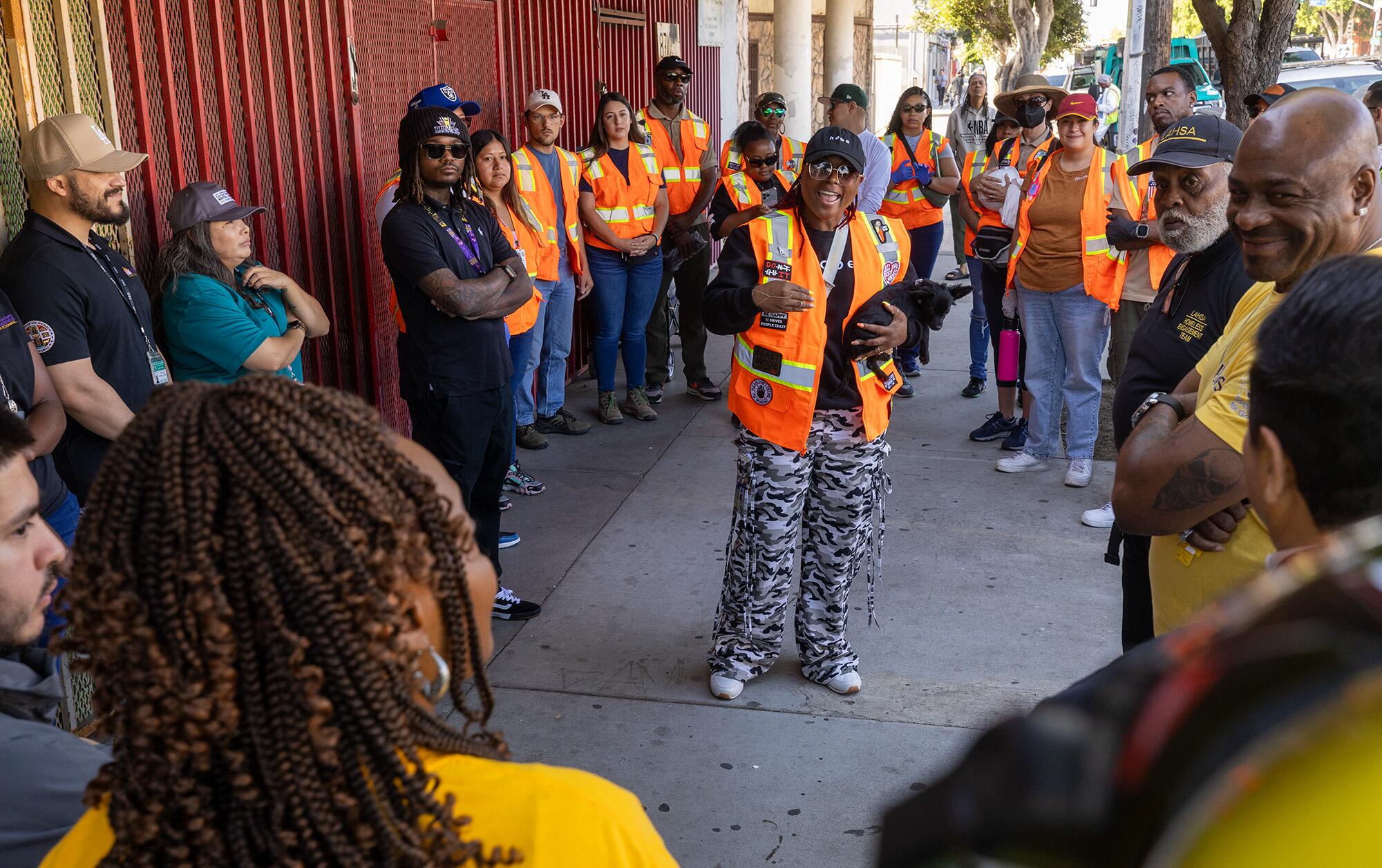
Annetta Wells of Inside Safe instructs employees before entering a homeless encampment in South Los Angeles on Wednesday to help move people into motel rooms.
(Brian van der Brug/Los Angeles Times)
The county's corresponding program, Pathway Home, had conducted 10 encampment operations as of mid-January, placing 449 people in temporary housing.
Inside Safe and Pathway Home have secured permanent housing for 634 people.
LAHSA Executive Director Va Lecia Adams Kellum, who created the model for Inside Safe’s encampment cleanups on the Venice Boardwalk as director of the Venice-based St. Joseph Center, attributed that success to a clearer focus on unsheltered homeless people.
“I want to try to get people into and out of the camps quickly and safely, without clearing them, without moving them from one place to another. I think that's the most encouraging thing.”
Los Angeles City Councilwoman Nithya Raman, who heads the City Council's housing and homelessness committee, said the new numbers represent a “pretty big change” after years of increases. At the same time, she warned that the city faces “harsh fiscal realities” that will make it more difficult to achieve additional reductions.
The city faces serious budget problems. State funding for shelter beds remains at risk, she said, and Proposition HHH funds, which helped fund permanent housing, have already been largely spent.
“I think we will be able to continue this trend this year,” he said. “Continuing this long-term trend will be more challenging and will require us to work harder to ensure we are creating a more efficient system.”
Figures released Friday show a clear shift in the population. While the number of homeless people without shelter has decreased, the number of people with shelter has increased significantly.
In the city of Los Angeles, the number of homeless people who are in some type of shelter grew by 17.7%, to 15,977. Countywide, that number increased 12.7%, reaching 22,947.
Historically, the percentage of homeless people in shelter was around 25%. In January, it was 35% in the city and 30% in the county, according to the count.
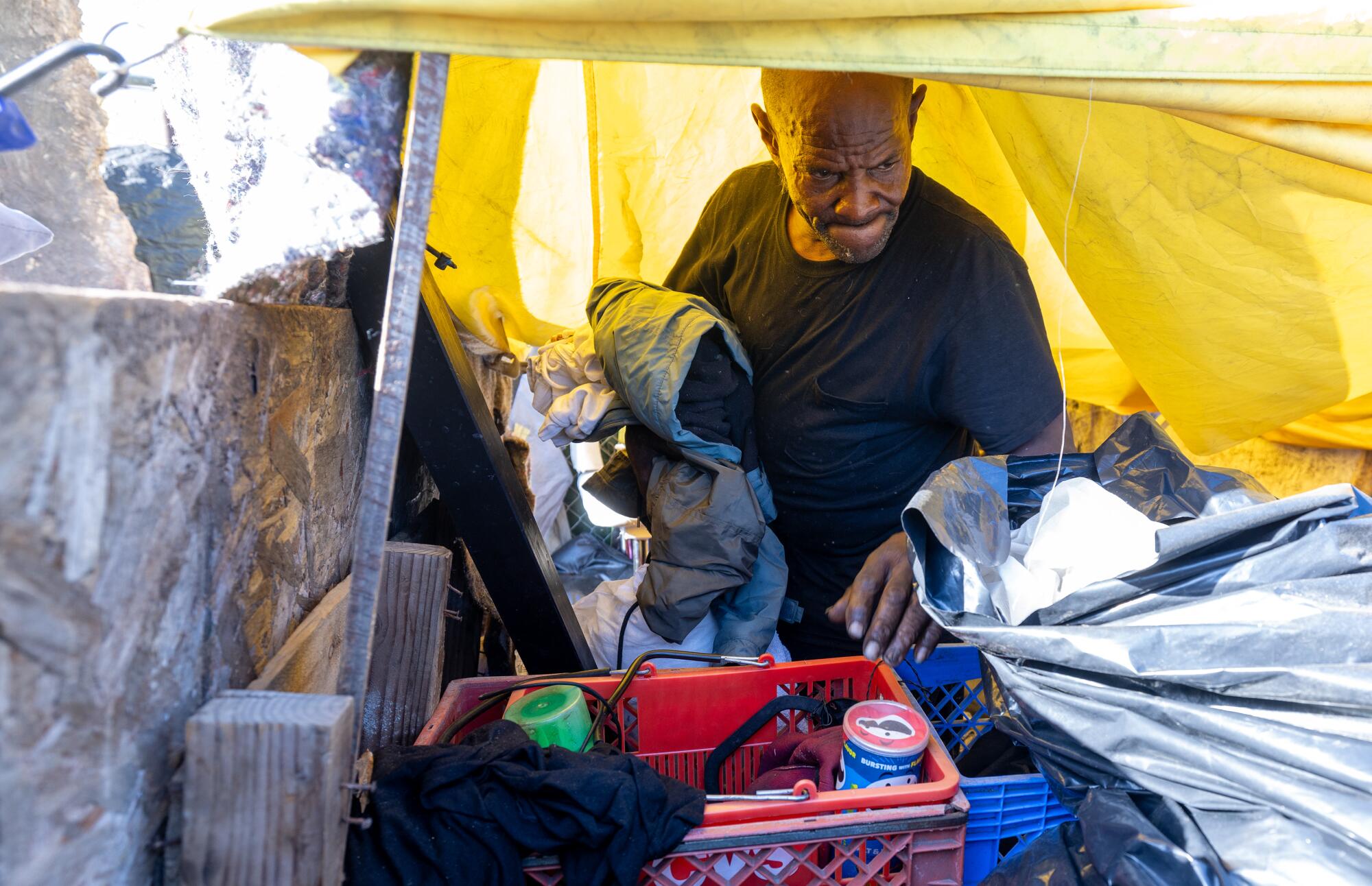
Dwight Thomas, 62, gathers his belongings at a tent at 86th Street and Broadway, where Mayor Karen Bass' Inside Safe initiative conducted a camping operation.
(Brian van der Brug/Los Angeles Times)
Chronic homelessness, defined as being homeless for a continuous year or at least four times in three years, also decreased 6.8% in the county, to just under 30,000.
Another encouraging sign was the increase in the number of homes. The county's Homeless Initiative reported that 27,300 people had obtained permanent housing, a 24% increase from 2022. Most of those people came from temporary housing, Rubenstein said.
“At this rate, if we could prevent more people from becoming homeless today, we could end the problem in just a few years,” he said. “Unfortunately, the root causes of the problem are stronger than ever.
“To prevent homelessness, the Los Angeles region must reverse decades of under-building of affordable housing, help more people achieve economic stability, and address the shrinking social safety net.”
The figures were released just days after the county Board of Supervisors cleared the way for a ballot measure that would double the size of the countywide sales tax that raises money for homeless services, raising it from a quarter of a cent to a half-cent. The measure, scheduled for a Nov. 5 ballot, would also raise money for affordable housing production.
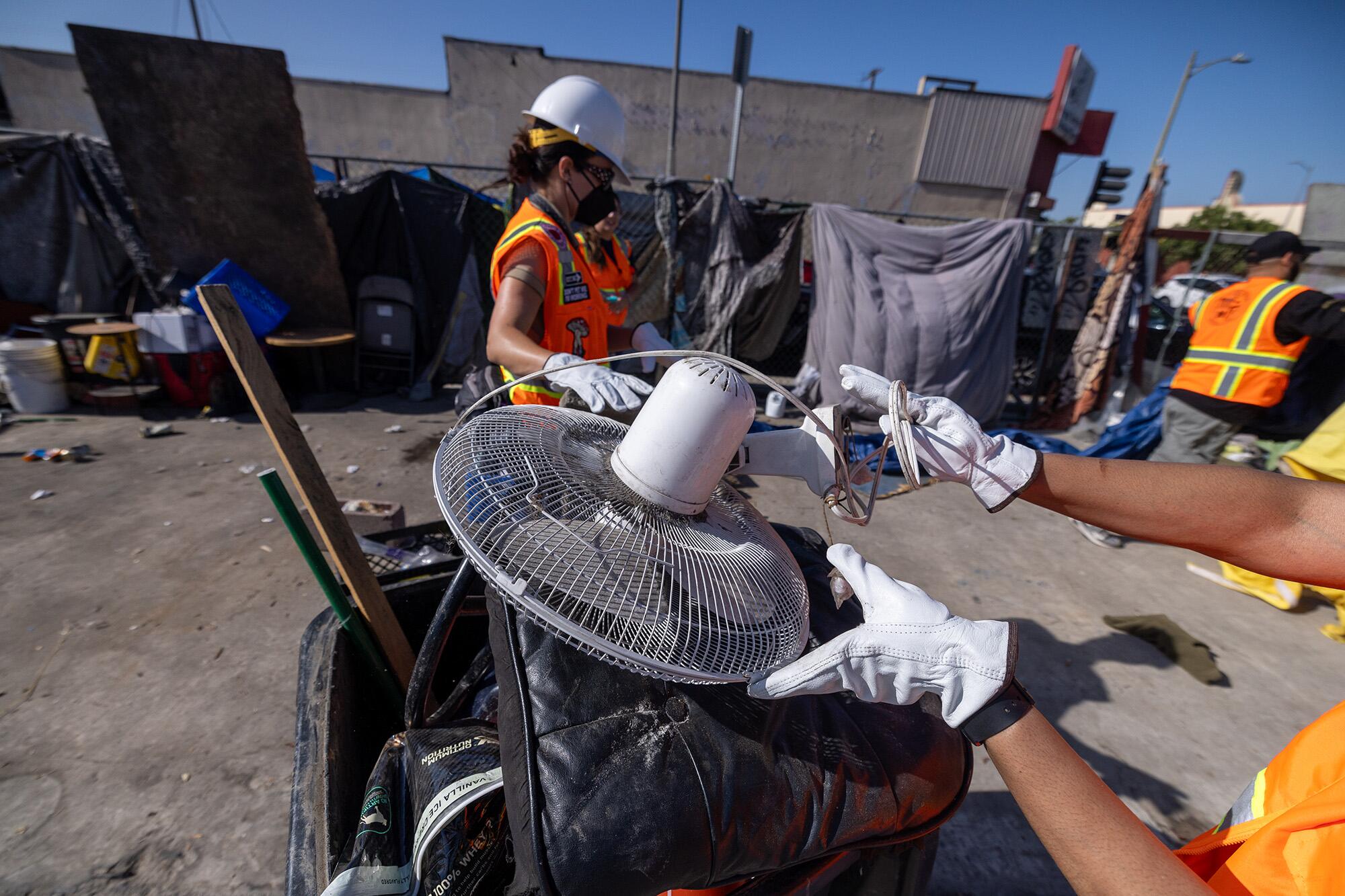
Inside Safe workers clean up homeless encampment in South Los Angeles
(Brian van der Brug/Los Angeles Times)
While the numbers provided some glimmers of hope, Los Angeles' streets, sidewalks and freeways show there is still much work to be done. Just outside City Hall, the corner of 1st and Spring streets, the site of an Inside Safe operation earlier this year, has about 27 tents and other makeshift structures.
On Wednesday, Bass' Inside Safe program moved about 20 people from the area of Franklin and Argyle avenues in Hollywood. The next day, at least four tents were in the area.
Two other separately estimated homeless groups experienced significant declines. The estimate of 2,406 transition-age homeless youth fell 16.2 percent and the estimate of 2,991 veterans fell 22.9 percent.
For the second year, LAHSA’s statistical team at the USC Suzanne Dworak-Peck School of Social Work provided a margin of error indicating the actual number for the Los Angeles Continuum of Care (the entire county except Long Beach, Pasadena and Glendale) could be 1,592 more or less than the estimate.
That figure represents the uncertainty in the demographic survey USC conducts after the field count, in which thousands of volunteers walk and drive through nearly every census tract in the county and mark every person they conclude is homeless and every store. tent, makeshift shelter, car, truck and RV.

Tanaka Richardson, right, and his cousin Tatayana Noles gather their belongings at a tent camp in South Los Angeles on Wednesday before being moved to a shelter.
(Brian van der Brug/Los Angeles Times)
Based on the count of about 4,000 people, USC statisticians calculate how many people, on average, live in each of those homes. Those factors are multiplied by the count to get the estimate.
Although estimates of the total number of homeless people were too close to last year's estimates to conclude that the problem has decreased, estimates of the decline in the unsheltered population were far outside the margin of error.
Los Angeles' results were similar to those of neighboring cities that reported their figures earlier.
For the first time in seven years, the city of Long Beach saw the number of homeless people decrease. Long Beach officials said 3,376 homeless people were counted during the last count, down 2.1% from 3,447 in 2023.
In Pasadena, the number remained unchanged at 556.
In contrast, Orange County recorded 7,322 homeless people, 28% more than in 2022.

